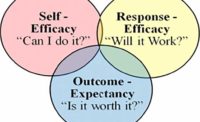If practiced routinely and extensively, the seven life lessons reviewed here will do more than prevent workplace injuries. Human welfare will be improved by less interpersonal conflict and bullying, and enhanced work productivity, environmental sustainability and life satisfaction. The first four lessons reflect the behavioral science principles of positive reinforcement, observational learning, and behavior-based feedback. The subsequent three lessons are derived from humanism. Thus, the academic label for these evidence-based lessons is humanistic behaviorism. We call it “Actively Caring for People” (AC4P).
Lesson 1: Employ more positive consequences
Applying soon, certain and positive consequences is the most efficient and effective way to improve both behavior and attitude at the same time. But historically, safety-related behavior has been managed more often with negative than positive consequences.
We live in a “click-it-or-ticket” culture that relies on negative consequences to control behavior—from the classroom and workplace to our homes, and when travelling in between. But to achieve and sustain an injury-free workplace people need to approach safety as success seekers (to gain positive consequences) rather than failure avoiders (to avoid negative consequences).
Lesson 2: Benefit from observational learning
Observational learning is involved to some degree in almost all human behavior. Consider a basic BBS process: 1) Coworkers develop a checklist of critical safe and at-risk behaviors on their job; 2) They use this checklist to observe each other while working and systematically record occurrences of safe and at-risk behaviors; and 3) The observer shows the completed checklist to the coworker, and the behavioral observations are discussed.
Throughout the observation process, observers learn specific safe work practices to perform and at-risk behavior to avoid.
Lesson 3: Become a behavior-based feedback coach
The letters of COACH say it all: “C” for Care; “O” for Observe; “A” for Analysis, “C” for Communicate, and “H” for Help. Start with Caring. “Know I Care and you’ll care what I know. Because I care about your safety, I’m willing to Observe your work routine and note occurrences of safe and at-risk behavior.”
The observer jots down contextual factors that could be influencing the observed behavior—from situational conditions to anticipated behavioral consequences. Noting external factors that might influence particular behaviors reflects the Analysis phase of coaching.
Then the observer Communicates the information derived from Observation and Analysis. Feedback is not delivered to direct behavior change, but rather to empower personal acceptance and self-motivation for beneficial improvement.
Lesson 4: Use more supportive than corrective feedback
Supportive feedback is the most powerful consequence for facilitating a learning process. To provide optimal direction, supportive feedback needs to be accepted and associated with the desired behavior. This happens when the feedback is timely—delivered soon after the target behavior, and meaningful—delivered privately and connected to a noble quality like leadership, integrity, or trustworthiness.
A positive reaction to supportive feedback increases the probability such feedback will be delivered again. The recipient of supportive feedback should not deny nor disclaim such acknowledgment with a statement like, "No problem." Rather, listen actively and show gratitude with a sincere “Thank You.”
Lesson 5: Embrace and practice empathy
Identifying with another person’s feelings, situation and motive is considered “empathy,” and with empathy comes mutual understanding, appreciation, and acceptance of assignments and/or recommendations for change.
When observing another person’s behavior, try and view the situation from that individual’s perspective. When listening to excuses for at-risk behavior, see yourself in the same predicament. Imagine the defense mechanisms you might use to protect your ego or self-esteem. And when considering action plans for improvement, view various alternatives through the eyes of the other person.
Lesson 6: Manage behavior and lead people
Managers hold people accountable to perform desirable (e.g., safe) behavior and avoid undesirable (e.g., at-risk) behavior. They direct and motivate behavior with an external accountability system. In contrast, leaders inspire people to hold themselves accountable to do the right thing (e.g., to follow the safe protocol). They facilitate self-motivation by influencing internal person-states that bolster self-motivation.
Behavioral-science research has determined how self-motivation is influenced by three person-states—choice, competence, and community. Situational and interpersonal factors influence these person-states.
Lesson 7: Progress from self-actualization to self-transcendence
Abraham Maslow’s “Hierarchy of Needs” is a most popular theory of human motivation. The assumption: People are first motivated to fulfill their physiological needs—the survival requirements of food, water, shelter, and sleep. After meeting these needs, people are motivated to pursue safety and security.
Social-acceptance needs are next—the desire to have friends and feel a sense of social support, belongingness, and community. After these needs are achieved, concern shifts to self-esteem—the desire to feel worthwhile, respected, and generally successful. Then, the individual can achieve "self-actualization". Many have learned this to be atop Maslow’s need hierarchy, but it’s not.
Shortly before his death in 1970, Maslow revised his renowned hierarchy and positioned self-transcendence at the top. At this level people go beyond their self-interests and perform AC4P behavior, such as reporting a safety hazard or giving coworkers BBS feedback about their safe and/or at-risk behavior.
The connection between Maslow’s Hierarchy of Needs and various behavioral consequences provides insight for fueling self-motivation and sustaining the benefits of an effective behavior-improvement process. First, an individual's position in the hierarchy determines what types of consequences are likely to be most reinforcing at a particular time. Without sufficient food, shelter or sleep, for example, people focus their behavior on satisfying these biological needs. But after this need level is satiated, human behavior is motivated by consequences linked to higher-level needs.
Higher-level needs implicate consequences related to self-motivation. Consequences that advance one's sense of connection with others (i.e., community), for example, satisfy one's need for acceptance or social support. Those consequences that support a person's belief in personal competence connect to needs for self-esteem and self-actualization. And, reaching beyond the self-serving needs to help others through AC4P behavior contributes to satisfying the needs for social acceptance, self-esteem, and even self-actualization.
To conclude
I hope you will translate these lessons into practical procedures to optimize quality AC4P engagement throughout your organizations and beyond. Human well-being is contingent on the number of individuals practicing these seven lessons to increase occurrences of AC4P behavior, and inspiring others to do the same.


